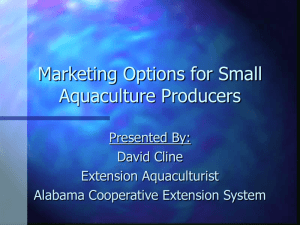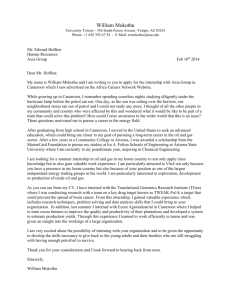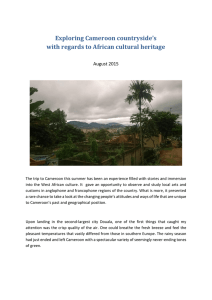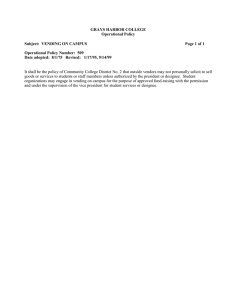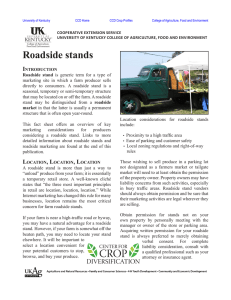Street food and urban and periurban agriculture and
advertisement
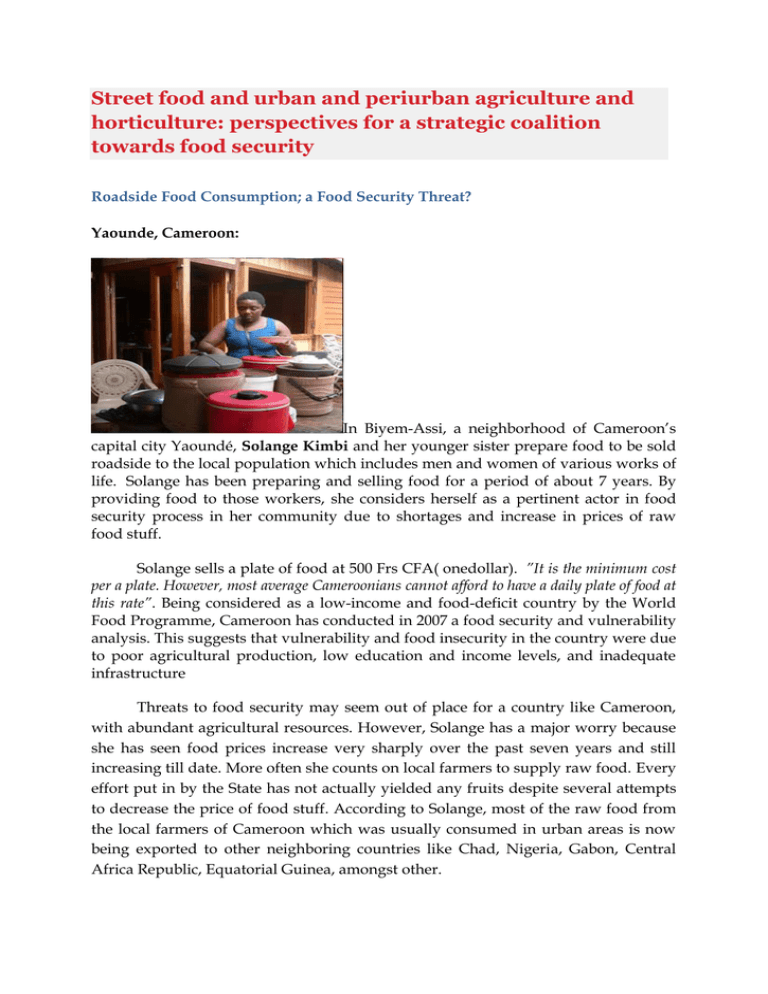
Street food and urban and periurban agriculture and horticulture: perspectives for a strategic coalition towards food security Roadside Food Consumption; a Food Security Threat? Yaounde, Cameroon: In Biyem-Assi, a neighborhood of Cameroon’s capital city Yaoundé, Solange Kimbi and her younger sister prepare food to be sold roadside to the local population which includes men and women of various works of life. Solange has been preparing and selling food for a period of about 7 years. By providing food to those workers, she considers herself as a pertinent actor in food security process in her community due to shortages and increase in prices of raw food stuff. Solange sells a plate of food at 500 Frs CFA( onedollar). ”It is the minimum cost per a plate. However, most average Cameroonians cannot afford to have a daily plate of food at this rate”. Being considered as a low-income and food-deficit country by the World Food Programme, Cameroon has conducted in 2007 a food security and vulnerability analysis. This suggests that vulnerability and food insecurity in the country were due to poor agricultural production, low education and income levels, and inadequate infrastructure Threats to food security may seem out of place for a country like Cameroon, with abundant agricultural resources. However, Solange has a major worry because she has seen food prices increase very sharply over the past seven years and still increasing till date. More often she counts on local farmers to supply raw food. Every effort put in by the State has not actually yielded any fruits despite several attempts to decrease the price of food stuff. According to Solange, most of the raw food from the local farmers of Cameroon which was usually consumed in urban areas is now being exported to other neighboring countries like Chad, Nigeria, Gabon, Central Africa Republic, Equatorial Guinea, amongst other. Considering the high cost of raw food stuff in the market, the security of roadside food does not seem to be guaranteed. Most of the food vendors do not take out time to look into the cleanliness part of the preparation, since they cook in large quantities and are always in a hurry to meet up with the consumers. The hygienic aspects of street food vending are a major concern for consumers, and food control officers. Vending stands and beer parlors are often crude structures, and running water, washing facilities and toilettes may not be available. Moreover water used for cooking of food stuffs and washing of plates is usually not often verified; most of it is carried from dirty wells, sometimes very close to toilets, and often offered to customers to drink. Another call for concern lies on inadequate refuge disposal facilities, which lead to accumulation of refuge at food vending sites. This attracts an increased pest population and favors a high risk of food contamination. The above mentioned are a major call for concern since it has proven to be the greatest source of food borne diseases. Foodborne bacterial agents are the leading cause of severe and fatal foodborne illnesses. Of the many thousands different bacterial species, more than 90% of food-poisoning illnesses are caused by species of Staphylococcus, Salmonella, Clostridium, Campylobacter, Listeria, Vibrio, Bacillus, and Enteropathogenic Escherichia coli (E-Coli). This is under looked by most of these roadside food vendors, thus a real call for health concern to the entire public. CECOSDA as a center for Communication and Sustainable Development for All took the initiative to sensitize some of these food vendors on the food security aspect of roadside food consumption. This has actually been a highly appreciated initiative which has helped curbed the minds and behaviors of these vendor who has actually changed some aspects of the preparation and serving of food to customers.
